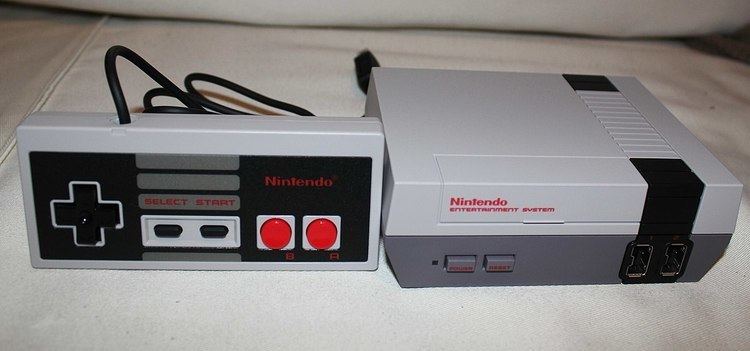Type Dedicated console | Manufacturer Nintendo | |
 | ||
Also known as Nintendo Classic Mini: Nintendo Entertainment System in Europe and AustraliaNintendo Classic Mini: Family Computer in Japan Release date JP/AUS: November 10, 2016 (2016-11-10)PH/NA/EU: November 11, 2016 (2016-11-11)RU: November 23, 2016 (2016-11-23) Introductory price US$59.99C$79.99£49.99A$99.95NZ$119.99€59.95Mex$1,999CL$79,990¥5,980kr. 599₱3,995₽3,999R$980 | ||
Nintendo Entertainment System: NES Classic Edition, known as Nintendo Classic Mini: Nintendo Entertainment System in Europe and Australia and the Nintendo Classic Mini: Family Computer (Japanese: ニンテンドークラシックミニ ファミリーコンピュータ) in Japan, is a miniature replica of the Nintendo Entertainment System (NES) video game console by Nintendo which launched on November 10, 2016 in Australia and Japan, November 11, 2016 in North America and Europe and November 23, 2016 in Russia. Based upon software emulation, it includes a static library of 30 built-in games from the licensed NES library, including some third-party titles, with writable storage only for save states.
Contents
Hardware
The system features HDMI display output and a new replica controller, which can also connect to the Wii Remote for use with Virtual Console games on Wii and Wii U. The controllers for the Japanese version are hardwired into the console just like the original Famicom. Because of this, the controllers and connecting cables are also smaller and shorter respectively, and cannot connect to a Wii Remote for use with Virtual Console games.
The console houses a new Nintendo Entertainment System emulation engine developed by Nintendo European Research & Development (NERD). The emulation engine was well-received by critics and was regarded as superior in both visual and audio support when compared to the NES Virtual Console emulation on the Wii U.
Despite being branded differently between North America and the PAL region, both regions distributed identical hardware and software. All the games included were based on their North American localisations and run at 60 Hz in all regions. The console's user interface supports up to eight languages; this does not change the language in-game.
A 320-page book called Playing with Power: Nintendo NES Classics, published by Prima Games, was released the same day as the console; the book is a guide to some of the games included on the system. Nintendo of America brought back the Nintendo Power Line as an automated phone hotline from November 11 to 13 as a celebration of the launch of the system.
Hacking
Shortly after the NES Classic Edition's release, hackers discovered ways to unofficially add titles to the system's library, as well as enable emulation support for other consoles. Games from various consoles, such as the Nintendo 64 and 32X, have been successfully ported to the NES Classic Edition.
Launch
The NES Classic edition was first released on November 10, 2016 in Japan and Australia, and November 11 in North America and Europe, but due to limited supply, it sold out almost immediately.
Reception
Aside from criticism regarding the controller cord being too short as well as minor emulation glitches, especially with sound, the NES Classic Edition has been well received.
One of many "plug-n-play" consoles on the market, the demand for NES Classic Edition was notably large, with various retailers collectively selling approximately 196,000 units in its first month, remarkably selling out within hours of availability. As of December 31, 2016, Nintendo reported 1.5 million units sold.
List of games
Regardless of the model/region, the microconsole included 30 built-in games in all regions. Only 22 titles are in common between all regions, while the eight remaining titles are exclusive to either Japan or North America/PAL region respectively. The following games are common to all regions:
The following games are exclusive to the North American and PAL NES version:
The following games are exclusive to the Japanese Famicom version:
